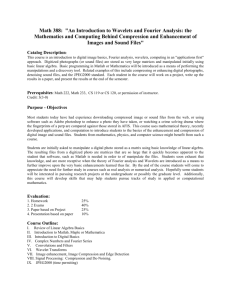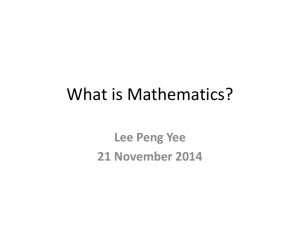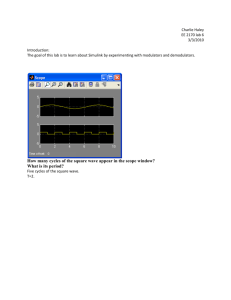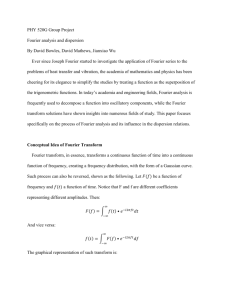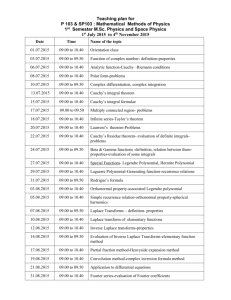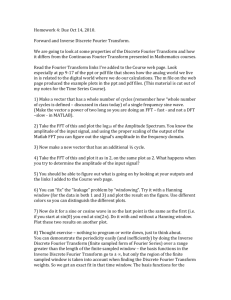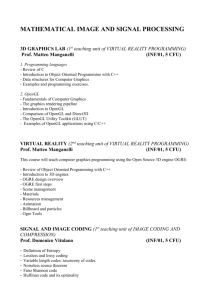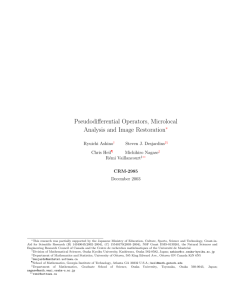Learning requirement
advertisement
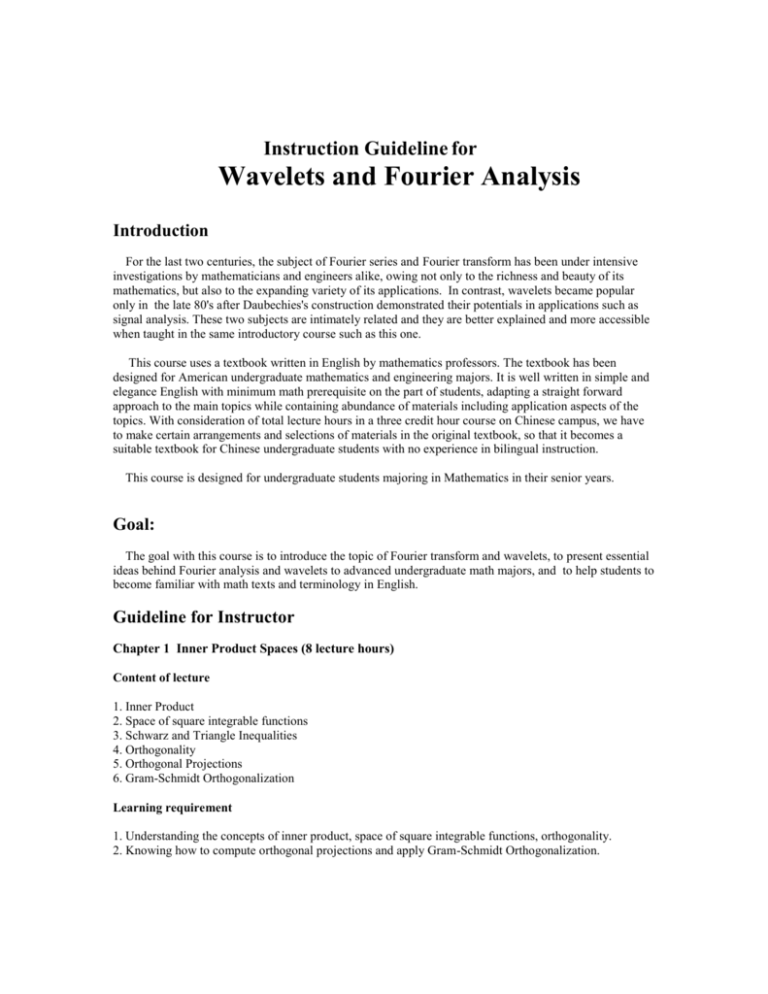
Instruction Guideline for Wavelets and Fourier Analysis Introduction For the last two centuries, the subject of Fourier series and Fourier transform has been under intensive investigations by mathematicians and engineers alike, owing not only to the richness and beauty of its mathematics, but also to the expanding variety of its applications. In contrast, wavelets became popular only in the late 80's after Daubechies's construction demonstrated their potentials in applications such as signal analysis. These two subjects are intimately related and they are better explained and more accessible when taught in the same introductory course such as this one. This course uses a textbook written in English by mathematics professors. The textbook has been designed for American undergraduate mathematics and engineering majors. It is well written in simple and elegance English with minimum math prerequisite on the part of students, adapting a straight forward approach to the main topics while containing abundance of materials including application aspects of the topics. With consideration of total lecture hours in a three credit hour course on Chinese campus, we have to make certain arrangements and selections of materials in the original textbook, so that it becomes a suitable textbook for Chinese undergraduate students with no experience in bilingual instruction. This course is designed for undergraduate students majoring in Mathematics in their senior years. Goal: The goal with this course is to introduce the topic of Fourier transform and wavelets, to present essential ideas behind Fourier analysis and wavelets to advanced undergraduate math majors, and to help students to become familiar with math texts and terminology in English. Guideline for Instructor Chapter 1 Inner Product Spaces (8 lecture hours) Content of lecture 1. Inner Product 2. Space of square integrable functions 3. Schwarz and Triangle Inequalities 4. Orthogonality 5. Orthogonal Projections 6. Gram-Schmidt Orthogonalization Learning requirement 1. Understanding the concepts of inner product, space of square integrable functions, orthogonality. 2. Knowing how to compute orthogonal projections and apply Gram-Schmidt Orthogonalization. Chapter 2 The Fourier Series (12 lecture hours) Content of lecture 1. Computation of Fourier Series on Standard Interval and Other Intervals 2. Cosine and Sine Expansions 3. The Complex Form of Fourier Series 4. Riemann-Lebesque Lemma 5. Convergence Theorems for Fourier Series (including Convergence at a Point of Continuity, Convergence at a Point of Discontinuity, Uniform Convergence) Learning requirement 1. Knowing how to compute Fourier Series on difference intervals and in different forms. 2. Understanding the contents and the proofs of Riemann-Lebesque Lemma and various convergence theorems. Chapter 3 The Fourier Transform (12 lecture hours) Content of lecture 1. Basic Properties of Fourier Transform 2. Fourier Transform of a Convolution. 3. Plancherel Formula 4. Sampling Theorem Learning Requirement 1. Understanding basic properties of Fourier Transform. 2. Knowing the contents and the proofs of major theorems in Fourier Transform. Chapter 4 Haar Wavelet Analysis (12 lecture hours) Content of lecture 1. Origin of Haar Scaling Function 1. Basic Properties of Haar Scaling Function 2. Haar Wavelet 3. Haar Decomposition and Reconstruction Algorithm Learning Requirement 1. Understanding the concept of Haar Wavelets and basic properties of Haar scaling functions. 2. Knowing the details of Haar decomposition and reconstruction algorithm Chapter 5 Multiresolution Analysis (12 lecture hours) Content of lecture 1. Concept of Multiresolution Analysis and Scaling Function 2. Wavelet and Wavelet Spaces Associated with Multiresolution Analysis 3. Decomposition and Reconstruction Formulas 4. Decomposition and Reconstruction Algorithm 5. Fourier Transform Criteria (for Scaling Function, Orthogonality, Scaling Equation) Learning requirement 1. Understanding the concept of scaling function and wavelet associated with MRA. 2. Understanding the mechanism of decomposition and reconstruction. 3. Understand the Fourier criteria for scaling Function and orthogonality. Chapter 6 The Daubechies Wavelets ( 2 lecture hours) Content of lecture 1. Daubechies's Construction Learning requirement 1. Understanding the construction of Daubechies wavelets.
